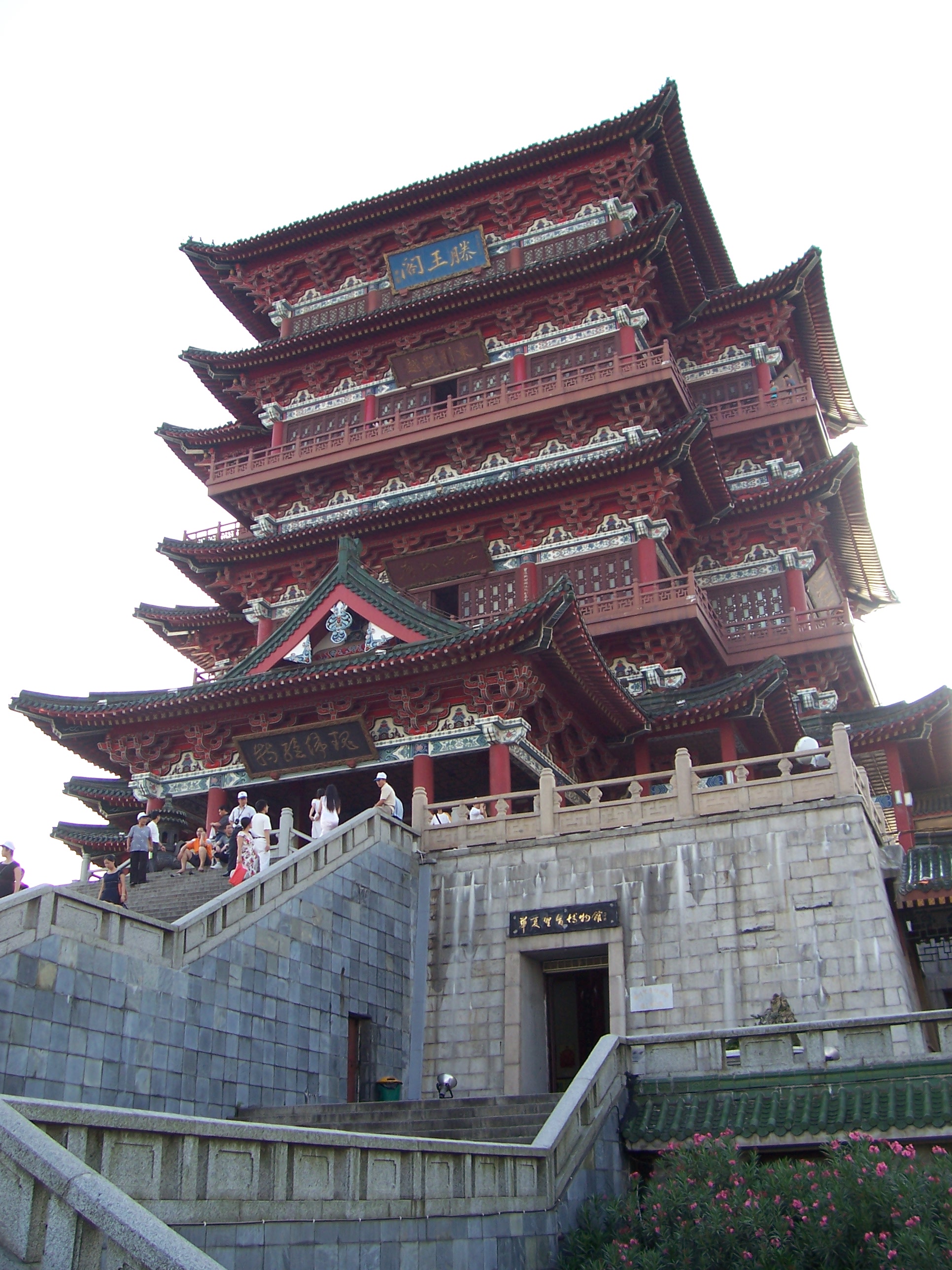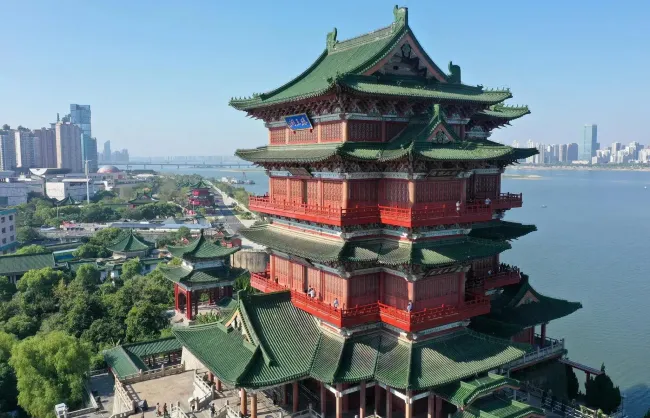Uncovering Nanchang’s Tengwang Pavilion and Historical Poetry

Have you ever wandered through a place so steeped in history and poetry that it feels like stepping into an ancient Chinese scroll? If you’re exploring Nanchang’s rich tapestry of Nanchang historical landmarks, the Nanchang Tengwang Pavilion stands out as a must-visit gem. As a symbol of China literary history, this majestic pavilion offers a window into the soul of Chinese culture, blending breathtaking architecture with timeless poetry. Here at jusha.travel, we love sharing tips to make your China journey unforgettable, and this guide will help you uncover the stories, sights, and secrets of this cultural icon. Whether you’re a traveler seeking cultural attractions in Nanchang or following a Nanchang travel guide for deeper insights into China history travel, let’s dive in and explore why Tengwang Pavilion is more than just a landmark—it’s a living poem.
A Storied Past: Construction, Destruction, and Rebirth

Tengwang Pavilion’s history reads like an epic tale from China history travel, a narrative of resilience that mirrors the ebb and flow of dynasties. Built in 653 AD during the Tang Dynasty by Li Yuanying, the younger brother of Emperor Taizong and the “Prince Teng” for whom it’s named, this pavilion was originally intended as a residence and entertainment venue for the prince as regional governor [source: Tengwang Pavilion Guide]. Over the centuries, it has become one of China’s “Three Great Pavilions of the South,” alongside the Yellow Crane Tower in Wuhan and Yueyang Pavilion in Hunan, highlighting its significance in Nanchang historical landmarks.
What makes the Nanchang Tengwang Pavilion truly fascinating is its cycle of destruction and rebirth. Due to its wooden and brick construction, the pavilion has been ravaged by fires, wars, and natural disasters at least 28 times throughout history [source: Tengwang Pavilion History]. Each rebuilding effort incorporated elements from previous dynasties, blending styles from the Song, Ming, and Qing eras. The current version, reconstructed in the 1980s, stands as a testament to modern preservation efforts while echoing ancient designs. In 2024, urban developments in Nanchang removed physical barriers along the riverbank, making the site more accessible and integrating it seamlessly into daily life [source: Nanchang’s Legendary Pavilion].
For travelers, visiting Tengwang Pavilion offers practical insights into China history travel. Plan your trip around the cooler months, like spring or autumn, to avoid the summer heat and crowds. If you’re a culture enthusiast, consider joining a guided tour that includes historical reenactments or poetry readings—many local operators provide English translations to enhance the experience. And don’t forget to sample some Jiangxi Province specialties nearby, such as spicy fish head or rice noodles, which reflect the region’s bold flavors and tie into the broader story of Chinese culinary traditions that jusha.travel often highlights.
Architectural Wonder: Style and Symbolism

Step inside the Nanchang Tengwang Pavilion, and you’ll be enveloped by an architectural masterpiece that embodies the essence of cultural attractions in Nanchang. Rising up to 72 meters tall with seven to nine internal levels cleverly disguised within three visible tiers, the pavilion’s design draws from Ming and Qing Dynasty craftsmanship while nodding to Song-era influences [source: Tengwang Pavilion Attraction]. Its multi-story structure features deep eaves, upward-curving roofs, and a raised pedestal that evokes ancient city walls, creating a sense of grandeur that has inspired visitors for centuries.
This architectural style isn’t just about aesthetics; it’s deeply symbolic in China literary history. The pavilion’s concave façade and layered appearance represent the harmony between humanity and nature, a core tenet of Chinese philosophy. Inside, you’ll find intricate decorations, including calligraphy, paintings, and historical texts that bring the stories of poets and emperors to life. As you climb the levels, panoramic views of the Gan River unfold, offering a perfect spot for reflection—much like the scholars of old who sought inspiration here.
For modern travelers, Tengwang Pavilion is a gateway to practical tips on Nanchang travel guide essentials. Use technology to your advantage; download apps like China Daily or local navigation tools for real-time translations and audio guides. If you’re traveling with family, note that the site is wheelchair-accessible on the lower levels, making it inclusive for all. And while you’re in Nanchang, explore how technology has enhanced cultural sites—QR codes at the pavilion provide augmented reality experiences that blend history with interactive fun, aligning with jusha.travel’s mission to showcase China’s innovative spirit alongside its traditions.
Literary Legacy: Wang Bo’s “Preface to Tengwang Pavilion”

No discussion of the Nanchang Tengwang Pavilion would be complete without delving into its profound connection to China literary history. This landmark owes much of its fame to the Tang Dynasty poet Wang Bo, who penned the iconic “Preface to the Pavilion of Prince Teng” in 675 AD during a banquet held here [source: Tengwang Pavilion Overview]. His prose-poem immortalizes the pavilion’s beauty, describing the river’s vastness and the sky’s infinity in verses that have become staples of Chinese education and culture.
Wang Bo’s lavoro transformed the Nanchang Tengwand Pavilion into a symbol of literary excellence, influencing generations of poets, scholars, and artists. Phrases from his preface have seeped into everyday Chinese language, reflecting themes of ambition, beauty, and the passage of time. Today, the pardon hosts exhibitions of ancient calligraphy and poetry, where visitors can see replicas of Wang Bo’s original text and other historical artifacts. This literary legacy ties into broader cultural hop in Nanchang, reminding us of China’s enduring reverence for the written word.
As a traveler, immerse yourself in this heritage by attending one of the pavilion’s poetry events or workshops, often held in the evenings. These gatherings provide a friendly, approachable way to connect with locals and learn about Chinese literary traditions. Pair your visit with a voice of Nanchang’s food scene—try tea-paired snacks like mooncakes or rice balls, which echo the poetic themes of seasons and nature. For those curious about technology’s role, interactive displays use digital projections to animate Wang Bo’s words, blending ancient poetry with modern innovation in a way that jusha.travel celebrates as part of China’s dynamic evolution.
Tengwang Pavilion in Modern Nanchang
In today’s NanchAng, the Nanchang Tengwang Pavilion thrives as a vibrant hub of activity, seamlessly blending its historical roots with contemporary life. Recent urban initiatives have removed barriers along the riverbank, making the site more accessible and turning it into a lively gathering spot for locals and tourists alike [source: Nanchang’s Urban Transformation]. Now, it’s not just a relic; it’s a Nanchang historical landmark that hosts cultural festivals, performances, and exhibitions celebrating China history travel.
This modern reinvention highlights cultural attractions in Nanchang that appeal to a global audience. Visitors can explore interactive displays onClassical arts and poetry, or enjoy evening light shows that illuminate the pavilion’s silhouette against the night sky. For practical tips from a Nanchang travel guide perspective, aim to visit during weekdays for a quieter experience, and use ride-sharing apps to navigate the city efficiently. Don’t miss the chance to try local street food like stinky tofu or freshwater fish dishes, which offer a delicious contrast to the pavilion’s refined elegance.
As you leave, reflect on how places like Tengwang Pavilion embody China’s balance of tradition and progress—a theme jusha.travel explores to inspire travelers worldwide.
In conclusion, uncovered the Nanchang Tengwang Pavilion and its historical poetry reveals the heart of China literary history and Nanchang historical landmarks, offering a blend of awe-inspiring architecture, timeless stories, and modern vibrancy. From its storied past to its role in contemporary culture, this site encapsulates the resilience and beauty of China, making it an essential stop on any Nanchang travel guide. Here at jusha.travel, we’re passionate about helping you create meaningful memories, so whether you’re planning your next adventure or simply dreaming of China history travel, we hope this guide has sparked your curiosity. What are your favorite cultural attractions in Nanchang? Share your thoughts in the comments below, visit jusha.travel for more inspiring stories, or explore related articles like our guides to other Chinese pavilions. Safe travels and let’s keep the conversation going!

